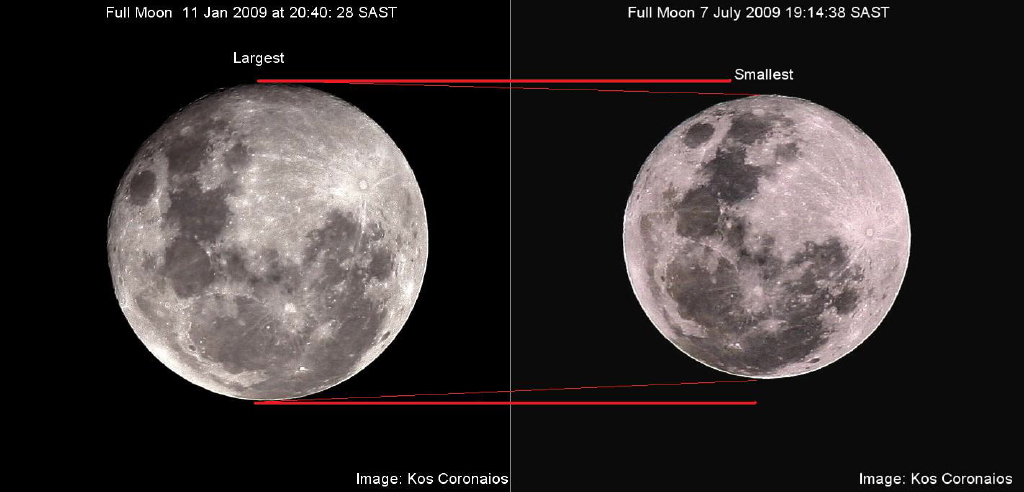
Largest and smallest Full Moons during 2009.
More or less once a mo(o)nth, the Moon is Full, appearing opposite the Sun in the sky and rising around the time the Sun sets.
All Full Moons aren’t the same, however – some are bigger than others. The angular size of the Moon depends on the Moon’s distance from the Earth at the time.
The largest Full Moon for 2013 – when the Moon was both Full and near perigee – occurred on June 23 at 13:00. The Moon’s angular diameter was then 33.5 arcminutes.
The smallest Full Moon is coming up on December 17, when the diameter will be 29.6′. The June Moon was 356 989 km away; the December Moon will be 402 442 km away, or 45 453 km further from us.
Impossible to detect with the naked eye but if you compare the images the difference in size and diameter can easily be seen. When observing a full Moon rising close to the horizon, it looks much larger than usual. This effect is known as “moon illusion” and we are not sure exactly what causes this optical illusion. Measurements prove that the Moon is no larger in size when seen close to the horizon than when seen overhead, but perhaps it seems so when comparing it with foreground objects.
A popular belief is that the Moon appears to be larger near the horizon due to the magnification effect caused by the Earth’s atmosphere. Unfortunately the only interference that the atmosphere has, is on the colour of the Moon but not its size. It does not magnify or enlarge it. In reality the Moon is about 1.5% smaller when near the horizon than when it is high in the sky because it is further away by nearly one Earth radius.
A simple experiment will show that there is no difference to a large Moon close to the horizon and one overhead. Hold a small object at arms length with one eye closed, positioning it next to the extraordinary large Moon. When the Moon is higher in the sky, position the same object near the Moon and there should be no difference in size.
The only time there will be a difference and the Moon’s angular diameter will vary from 33.5 arc minutes at perigee to 29.43 arc minutes at apogee, a difference of over 10%, will be because of the ellipticity of the Moon’s orbit.
Find out more
Tutorial: Photographing the Full Moon with a Digital Camera
Largest and smallest Full Moon for 2012
